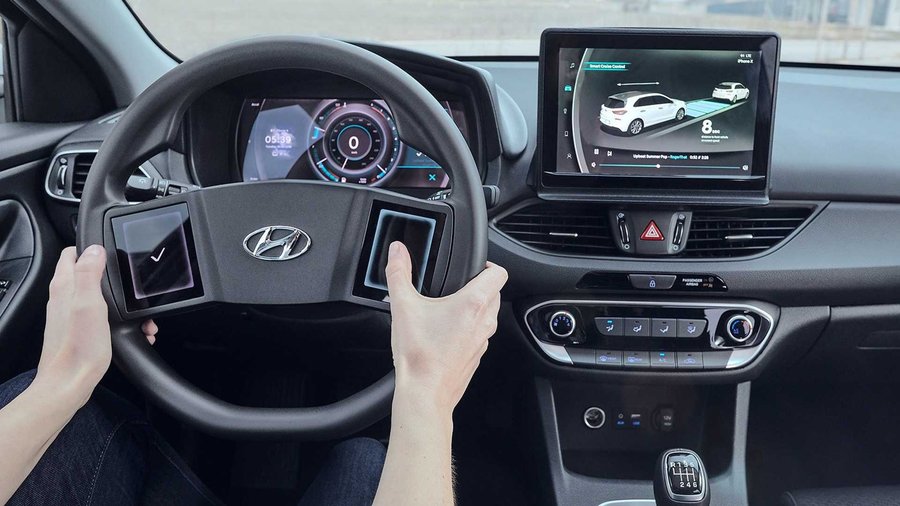Hyundai Thinks Steering Wheel Touchscreens Are A Good Idea

Modern cars make use of screens more than ever before. Central displays are larger (some up to 15 inches, like on the Tesla Model 3) and analog instrument clusters are going the way of the dodo in place of digital tachometers instead. The latest Hyundai study, though, takes the onslaught of screens to a whole new level; the brand's newest virtual cockpit even has screens on the steering wheel.
Dubbed "the future of the car's cockpit," the Hyundai study shows an i30 with a central touchscreen, a digital instrument cluster, and yep, two small screens on the steering wheel, located directly behind the driver's thumbs. It even has a manual, making things all the more convoluted. But why the i30?
"We chose the i30 to demonstrate that innovations are not limited to higher-segment vehicles," notes Regina Kaiser, Human Machine Interface Senior Engineer at Hyundai Motor Europe Technical Center. "Hyundai intends to prove that innovations need to be achievable for a broad customer base."
According to Hyundai, this virtual cockpit should make life easier for drivers. "We are continuously working on new technologies that make our cars perfectly intuitive and user-friendly," says Kaiser. The screens are large, configurable with up to five "buttons" per display, and provide haptic feedback for ease of use.
This is Hyundai's fourth iteration of the virtual cockpit. The company showed its first version in 2015 but has been marginally tweaking it ever since. The steering wheel mounted-touchscreens are new, and the digital instrument cluster is now a multi-layer display (two screens separated by six millimeters) that create a 3D-like effect. The dual screens, supposedly, are easier for the driver to see.
The virtual cockpit pictured here won't go into production. Instead, Hyundai will integrate components of the concept into future vehicles.
Related News
